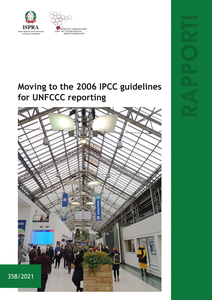Moving to the 2006 IPCC Guidelines for UNFCCC reporting
In the framework of the international climate negotiations under the United Nations Framework Convention on Climate Change (UNFCCC), transparency arrangements play an essential role. Information gathered are critical to driving the increased action required to meet the goal of limiting global warming to well below 2 degrees, pursuing efforts to 1.5, as well as to build confidence in the system and mutual trust among nations.
With the adoption of the Paris Agreement, a new Enhanced Transparency Framework (ETF) was established, with common rules applicable to all Parties and the provision of specific flexibilities for those developing countries that need them in light of their capacities.
At COP24, the Modalities, Procedures and Guidelines (MPGs) for the ETF were adopted as part of the Paris Rulebook, containing the rules and requirements applicable to all countries for effective implementation of the ETF. In this context, the 2006 IPCC guidelines were adopted as mandatory reporting guidelines to be used by all Parties in elaborating their GHGI, which represent a key component of the ETF.
At COP26, the new common reporting tables (CRTs) to report GHGIs under the Paris Agreement have been adopted, and a new reporting software will be developed accordingly by the UNFCCC Secretariat by June 2024.
At the international level, the use of these new reporting tables and software will pose challenges to developing countries, most of which have generally limited experience in using the 2006 IPCC Guidelines as well as in using a software for reporting. Moreover, it should be noted that differences exist in the structure of the 2006 IPCC Guidelines and the structure of reporting tables, thus potentially increasing the need for training and capacity-building support.
To contribute addressing some of the challenges outlined above, this report aims to assist developing countries in moving towards the 2006 IPCC Guidelines to prepare meeting the new reporting requirements of the Paris Agreement. To this end, the report makes an analysis of the changes occurred in the 2006 IPCC guidelines compared to the previous ones, while providing suggestions on how to undertake UNFCCC reporting through the Common Reporting Tables (CRTs) that all Parties will have to use in the new transparency regime.
This report is structured along four modules: 1) Energy, 2) Industrial Processes and Product Use (IPPU), 3) Agriculture, Forestry and Other Land Use (AFOLU) and 4) Waste. Each module is further organized by reporting categories agreed upon in the new CRTs, with the view of facilitating the ultimate goal of improving clarity in reporting.
Publication available only on-line
Download the publication (pdf - 4.8 mb)

